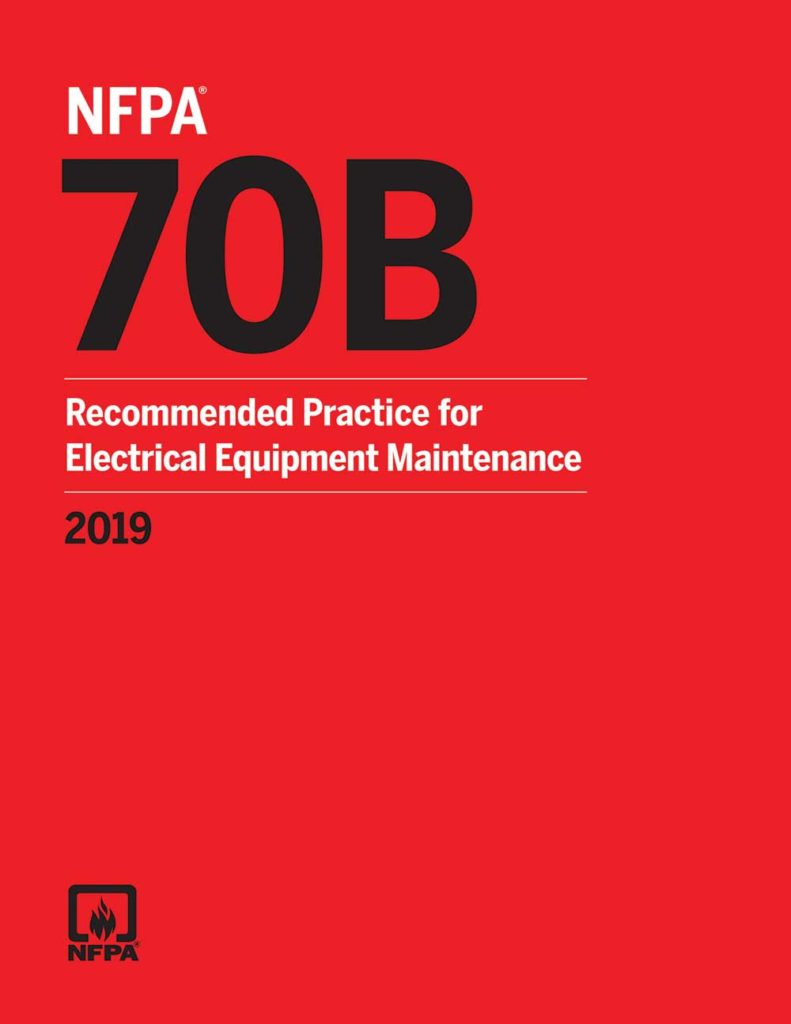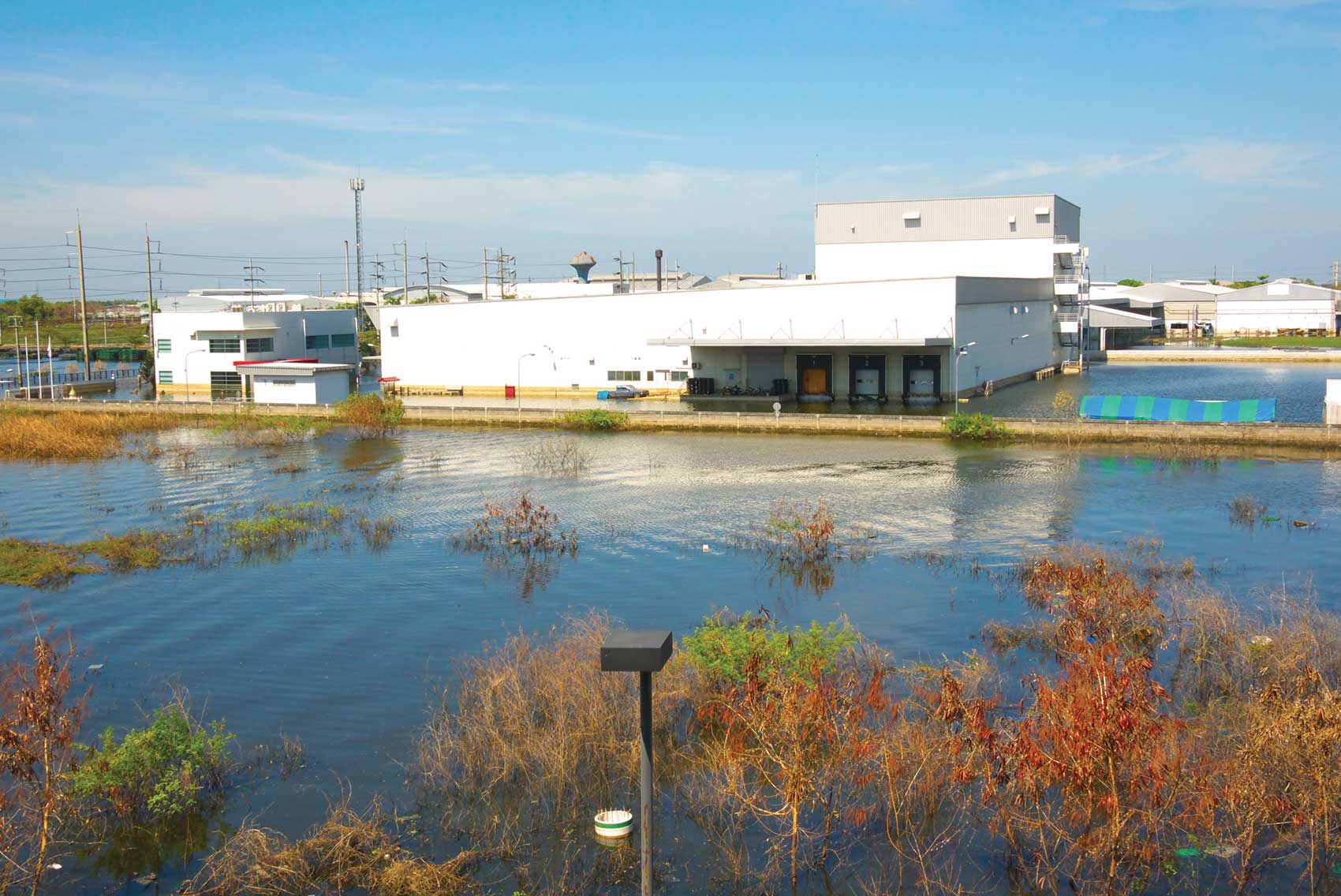Key Steps to Help Electricians Assess Whether Damaged Industrial Electrical Systems Should be Repaired or Replaced
Natural disasters can strike in an instant and leave us devastated when it comes to the life, both professionally and personally, that we have built up over the years. In the blink of an eye, our entire world can be uprooted and turned upside down. But does it have to be this way? Not necessarily. There are things we can do to prepare before a disaster event so that the recovery process goes as smoothly as possible.
This is where the 2019 edition of NFPA® 70B, Recommended Practice for Electrical Equipment Maintenance can help with respect to certain types of electrical installations. NFPA 70B is a recommended practice that contains information supporting the development of an electrical preventive maintenance program. Chapter 32 is all about preparing, responding, and recovering from a disaster—disasters that can come in all shapes and sizes. From flooding and tornadoes to earthquakes and fires, each event poses a different hazard and therefore requires a different approach to the recovery process. However, there is one thing that remains constant throughout the whole process — organization and planning are the key elements in getting back online in the most efficient way possible.
Having a plan for preparing your electrical system to weather the storm and also having a plan for when you are recovering from a disaster can mean the difference between months of downtime and being up and running in a matter of weeks. NFPA 70B has sections that spell out what should be included in this planning. First, we’ll start by looking at Section 32.2.2, which provides examples of how to prepare the facility prior to the event.
Preparation is Key
 Many of the suggested measures in NFPA 70B revolve around preparing equipment to minimize damage from water. Section 32.2.2 recommends that whenever possible, the facility should be secured before the disaster event in order to limit the damage to electrical equipment. This can include de-energizing equipment and circuits to prevent electrical short circuits, sandbagging the fronts of electrical equipment rooms to limit the amount of water and debris that enters, and removing critical computer and electronic equipment from the site. This section also recommends that all electrical equipment drawings, manuals, and supplies stored at ground level be removed from the site or moved to higher ground prior to the disaster event.
Many of the suggested measures in NFPA 70B revolve around preparing equipment to minimize damage from water. Section 32.2.2 recommends that whenever possible, the facility should be secured before the disaster event in order to limit the damage to electrical equipment. This can include de-energizing equipment and circuits to prevent electrical short circuits, sandbagging the fronts of electrical equipment rooms to limit the amount of water and debris that enters, and removing critical computer and electronic equipment from the site. This section also recommends that all electrical equipment drawings, manuals, and supplies stored at ground level be removed from the site or moved to higher ground prior to the disaster event.
Another measure that can be taken before a disaster is determining who will be a part of the team responding and leading the disaster recovery operation. This can be someone in-house, a contractor specializing in disaster recovery, or maybe a combination of the two. Either way, having a plan of action and knowing who will be performing the disaster recovery services after an event helps significantly with respect to responding to the event. When using outsourced personnel or contractors, Section 32.2.3.2 recommends establishing a master service agreement or MSA with multiple qualified vendors who specialize in providing recovery services to electrical. This prevents confusion and delays in the recovery efforts.
Disaster Recovery Plans
In addition to determining who will be a part of the recovery effort, it is important to develop a safety plan to guide the disaster recovery efforts. Similar to an electrical safety plan, this plan will lay out specific procedures that must be followed to safely return the site to service. While a company’s electrical safety program will govern how equipment is placed in an electrically safe working condition, the disaster recovery safety plan might contain key aspects such as:
- how to handle air quality issues;
- structural issues that need to be addressed;
- any chemical or biological hazards that will expose recovery personnel to a hazard;
- any site-specific hazards; and/or
- site-specific personal protective equipment.
Often in the wake of a natural disaster, buildings can be without power from the normal utility for extended periods of time. This can create a logistical nightmare if power is needed to recover from a disaster. It can also create issues within the facility if there are critical systems such as chemical manufacturing processes or in hospitals where the extended amount of downtime exceeds the backup generator fuel supply. However, temporary and emergency power generation requires quite a lot of planning before connection of a generator.
A team should be formed that is dedicated and responsible for providing temporary power to the facility during the recovery effort. This team must also develop a plan and procedures that address hazards from connecting a temporary backup source of power. These procedures should identify such things as:
- Backfeeding of equipment.
- How motor starters for pumps will be addressed.
- Will the facility need any temporary signage or barricades.
- Where on-site generators will be located.
- How temporary generators will be supplied with enough fuel to serve the building during recovery.
- What the process will be for the addition of more temporary generators to the electrical system.
- How to address access and exhaust flow concerns.
Temporary generators can often pose many hazards to recovery personnel. It is crucial for all procedures for handling emergency and temporary power generation are spelled out in a written plan prior to the disaster event.
Equipment — Repair or Replace?
One way of preparing a facility in the face of a natural disaster is to remove specific electrical components or equipment. However, certain procedures must be followed to ensure a speedy and efficient reinstallation of this equipment. All electrical components of equipment should be properly documented before removal, and the documentation process should include the following:
- Tag each piece of equipment.
- Label all control and power wires.
- Take a digital picture of each piece of equipment.
- Sketch an accurate diagram of each piece of equipment on the electrical equipment drawing sheet.
- Fill out the electrical equipment tracking form.
- Save all pictures on a local database.
- File the electrical equipment drawing sheet.
- Create a master electrical equipment tracking document.
- Ship documents of all electrical equipment.
Other times it is not possible to remove electrical equipment from a facility in advance of a disaster. In this case, equipment may need to be removed from the affected facility and sent to an offsite service center for repair. This equipment should be tagged, identified, tracked, and the status updated on a master equipment repair database. Equipment tags for each piece of equipment will contain information that may include a unique sequence number, a plant identification number, the description, the date which the equipment was removed, where the equipment was fed from in the building, and what room the equipment was installed. The tag should be attached to the equipment with a secure plastic wire tie or zip tie.
Control circuits often contain some of the more complicated wiring schematics of all the equipment in the affected facility. Therefore, it is very important to make sure that all wires are labeled. Wires can be labeled with a letter or number so that the control wires can be reconnected when the equipment is reinstalled in the building. Make sure that each side of the termination, both the wire and the connected device is identified to ensure wiring will be reconnected as it was originally installed.
Once equipment, conductors, and control circuits have been labeled, photographs should be taken. NFPA 70B recommends, at a very minimum, that three photographs be taken. The first photo should include the equipment tag in the picture, making sure that the tag is legible and clear for identification purposes. The second photograph should be an overall view for the purpose of wire classification and documentation during the re-installation process. Lastly, the third photograph should be taken of the equipment nameplate. Additional photographs can be taken to document such things as the location of equipment, the orientation of equipment when installed, and the placement of equipment with regards to other systems.
After the equipment has been tagged and properly photographed, an accurate field sketch of the electrical equipment should be produced. The sketch should be recorded on a site-specific electrical equipment drawing sheet and should include the name of the facility, the job number, power center sequence number, plant equipment number, plant description, technician name, and the date the equipment was removed. After the sketches have been made, equipment should be added to the electrical equipment tracking sheet. The electrical equipment tracking sheet should be custom built and include detail specific to the affected facility. The tracking sheet should also contain general information that will help with keeping tabs on equipment that has been removed and taken off-site. This will simplify the re-installation of the affected equipment.
An essential part of the recovery process involves making decisions about whether to repair or replace the affected electrical equipment. This decision can be based on many factors, but two questions must be first asked:
- Can the equipment even be repaired?
- Can the repairs take place on-site or do they need to ship the equipment to a repair facility?
Many other factors contribute to the decision about whether to repair or replace electrical equipment. However, these may be governed by manufacturers documentation. NFPA has created a free checklist, “Natural Disaster Electrical Equipment Checklist,” that spells out what some of these factors might be. This checklist also gives guidance on how to prioritize equipment based upon what is the most critical equipment to install with respect to a timely and efficient recovery. This checklist is a step-by-step thought process to help building owners and facility managers understand the questions they must ask in deliberating whether or not equipment can be repaired or must be replaced.
Summary
At every point in the recovery stage, it is important that a solid plan is developed to spell out the procedures for recovery personnel to follow. Recovery effort efficiency will depend on how well thought out the disaster recovery plan is. As the quote often attributed to Benjamin Franklin states, “An ounce of prevention is worth a pound of cure.” This is important when preparing for looming natural disasters in relation to electrical systems. Having a speedy recovery and getting facilities back in operating condition is the goal of Chapter 32 in NFPA 70B.















Find Us on Socials